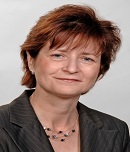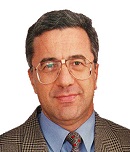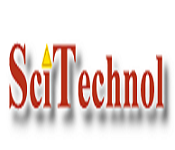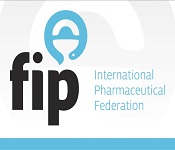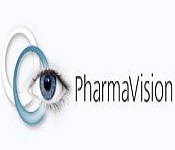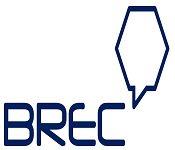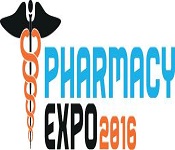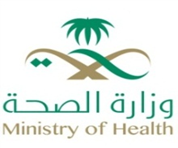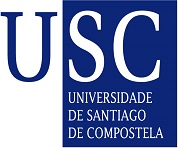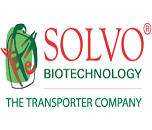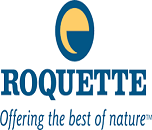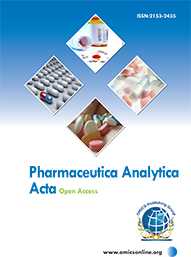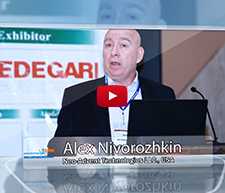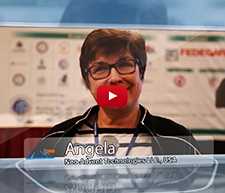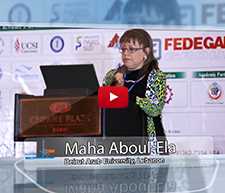Theme: Challenges and Advances in Novel Drug Delivery Systems
Pharmaceutica 2016
OMICS International is a renowned organization that organizes highly notable pharmaceutical conferences throughout the globe. After a successful conference of Pharmaceutica 2015, OMICS International is currently bringing forth "8th International Conference and Exhibition on Pharmaceutics & Novel Drug Delivery Systems" (Pharmaceutica 2016) slated on March 07-09, 2016 at Madrid, Spain.
Pharmaceutica 2016 covers various aspects of Pre-formulation Considerations, Formulation Aspects for Various Routes, Recent Advances in Drug Delivery Technology, Drug Targeting, Nanotechnology in Drug Delivery Systems and its Application, Major Challenges in Drug Delivery System, Physiological Considerations, Vaccine Drug Delivery Systems, Drug Discovery and Development, Medical Devices for Drug Delivery, Smart Drug Delivery Systems, Delivery Methods for Peptides and Biologics, Global Drug Policy in Drug Delivery Technology.
Track-1: Pre-formulation Considerations
Pharmaceutics is the study of relationships between preformulation, drug formulation, delivery, disposition and clinical response. The inherent instability nature of a new drug will alter its desired form into undesired form when presented in a suitable dosage form with the excipient/s upon storage. In early days this process was confined only for assessing few characteristics, but today this process is being considered as a formulation strategy and the tremendous technological advancement has been achieved in this field which enables us to save time and money through planned management system and hence impacts Pharmaceutica 2016 to be a formulation conference. Use of glorious statistical software even based on artificial neural networking are made the task of preformulation and optimization process easier. Role of preformulation studies techniques like freeze drying aspects projects the event Pharmaceutica 2016 to pose as a freeze drying meeting in drug discovery, drug development plays major role in pharmaceutical formulation development and the studies will help in different dosage forms design. With the increasing number of novel and specialized compounds being developed, a "one size fits all" approach to drug formulation and delivery is no longer optimal, necessitating the consideration of formulations unique to each drug. NDDS conference will discuss on Early Approaches, Present Scenario and Future Prospects of Preformulation events. There are more than 1400 sustained or controlled release drugs have been approved all over the world. Pharmaceutical conferences discusses the state-of-the-art technology being applied and advances in formulation studies.
Revenues within the global generics market reached an estimated value of $265 b in 2012, showing a growth of 9.3% throughout the year. The contribution of generics is approximately 20% of overall international pharmaceutical market. The utilization of generic in terms of volume is higher in the US and lower in Japan, 89% and 24% respectively.
The oral drug delivery market remains the largest slice of the overall drug delivery market, with more than 52% of the market share. It is presently valued at $49 billion and is expected to reach over $90 billion by 2016, at a CAGR of 11%. The growth in the oral drug delivery market shall be driven primarily by newer technologies enabling controlled release formulations of oral drugs and oral formulations of injectable only drugs.
Relevant Conferences:
9th World Drug Delivery Summit June 30-July 02, 2016 New Orleans, USA; 4th Global Experts Meeting on Neuropharmacology September 15-17, 2016 San Antonio, USA; Asia Pacific Drug Formulation & Bioavailability Congress June 06-08, 2016 Beijing, China; International Conference and Expo on Industrial Pharmacy April 28-29, 2016 Dubai, UAE; 4th Annual European Pharma Congress June 13-15, 2016 Berlin, Germany; 2nd Annual Formulation & Drug Delivery Congress 2016 May 18-19, 2016 London, UK; Drug Development, Pharmacokinetics and Imaging January 18-22, 2016 Oxford, UK; Novel Immunotherapeutics Summit January 25-26, 2016 San Diego, US; ICDDT-7th International Conference on Drug Discovery and Therapy February 15-18, 2016 Dubai, UAE; Africa Pharmaceutical Summit February 24-25, 2016 Nairobi, Kenya; 11th Annual Biomarkers Congress February 25-26, 2016 Manchester, UK; 5th RSC / SCI symposium on Ion Channels as Therapeutic Targets March 14-15, 2016 Cambridge, UK.
Track-2: Formulation Aspects for Various Drug Routes
There are various anatomical routes which thought them medical drugs can be administered into the human body. The selection of the route depends on three factors which are: the effect desired the type of the disease and finally the type of the product. The most common routes of drug administration include the following:
Oral route, this is the oldest route which has been used for conventional and novel drug delivery administration. Parenteral route, these routes include intramuscular, intravenous, intra-arterial and subcutaneous route. Transdermal route, this route the medical treatment will apply on the body surfaces such as the skin and / or mucous membrane. Inhalation route, In this type of medical treatment application route, the medical treatment will directly reach the lungs, by this way this route considers the route of choice to avoid systemic effect i.e., increase the bioavailability of the drug in the system. Pharmaceutical conferences offers presentations by researchers from a number of disciplines, from the life sciences to engineering, who will address a range of topics including peptide and protein delivery, gene delivery, cell delivery, vaccines, transdermals, pulmonary delivery, new materials, and other subjects, from varied disciplines while focusing on the central theme of drug delivery.
Relevant Conferences:
9th World Drug Delivery Summit June 30-July 02, 2016 New Orleans, USA; 4th Global Experts Meeting on Neuropharmacology September 15-17, 2016 San Antonio, USA; Asia Pacific Drug Formulation & Bioavailability Congress June 06-08, 2016 Beijing, China; International Conference and Expo on Industrial Pharmacy April 28-29, 2016 Dubai, UAE; 4th Annual European Pharma Congress June 13-15, 2016 Berlin, Germany; 2nd Annual Formulation & Drug Delivery Congress 2016 May 18-19, 2016 London, UK; Drug Development, Pharmacokinetics and Imaging January 18-22, 2016 Oxford, UK; Novel Immunotherapeutics Summit January 25-26, 2016 San Diego, US; ICDDT-7th International Conference on Drug Discovery and Therapy February 15-18, 2016 Dubai, UAE; Africa Pharmaceutical Summit February 24-25, 2016 Nairobi, Kenya; 11th Annual Biomarkers Congress February 25-26, 2016 Manchester, UK; 5th RSC / SCI symposium on Ion Channels as Therapeutic Targets March 14-15, 2016 Cambridge, UK.
Track-3: Recent Advances in Drug Delivery Technology
Drug delivered can have significant effect on its efficacy. Some drugs have an optimum concentration range with in which maximum benefit is derived and concentrations above (or) below the range can be toxic or produce no therapeutic effect. Various drug delivery and drug targeting systems are currently under development and being showcased in various targeted drug delivery systems conferences and Novel Drug Delivery system conferences across the globe. The main goal for developing such delivery systems is to minimize drug degradation and loss, to prevent harmful side effects and to increase bioavailability. Targeting is the ability to direct the drug loaded system to the site of interest. New drug carriers systems are one can name soluble polymers, micro particles made of insoluble (or) biodegradable natural and synthetic polymers, microcapsules, cells, cell ghosts, lipoproteins, liposomes and micelles. Pharmaceutica 2016 evolves to be a drug disintegration conference, emulsion conference, capsule conference, and solubility conference. Pharmaceutical conferences will cover industry case studies, regulatory updates, latest therapies and technology innovations and much more.
Key players in the market include Amgen, Inc., AstraZeneca plc, Eli Lilly & Co., Ipsen S.A., Merck & Co., Novartis AG, Novo Nordisk A/S, Roche Holdings AG, Sanofi, Takeda Pharmaceutical Company Limited, and Teva Pharmaceutical Industries Limited. Leading API manufacturers include Bachem Holding AG, PolyPeptide Group, and Peptisyntha Inc. at the pharmaceutical companies’ conference
Relevant Conferences:
9th World Drug Delivery Summit June 30-July 02, 2016 New Orleans, USA; 4th Global Experts Meeting on Neuropharmacology September 15-17, 2016 San Antonio, USA; International Conference and Exhibition on Nanomedicine and Nanotechnology in Health Care July 25-27, 2016 Bangkok, Thailand; International Conference and Expo on Industrial Pharmacy April 28-29, 2016 Dubai, UAE; 4th Annual European Pharma Congress June 13-15, 2016 Berlin, Germany; Novel Immunotherapeutics Summit January 25-26, 2016 San Diego, US; Antibodies as Drugs March 06-10, 2016 Whistler, Canada; Drug Delivery Partnerships 2016 (DDP 2016) January 20-22, 2016 Florida, USA; Pharmapack Europe February 10-11, 2016, Paris Expo Porte De Versailles; 7th Annual Global Drug Delivery & Formulation Summit May 23-25, 2016 Berlin, Germany; 6th American Drug Delivery & Formulation Summit June 12-14, 2016 Hilton San Diego, US; Respiratory Drug Delivery (RDD 2016) April 17-21, 2016 Phoenix, Arizona.
Track-4: Drug Targeting
Drug Targeting to specific organs and tissues has become one of the critical endeavours of the century since the use of free drugs in conventional dosage forms generally involves difficulties in achieving the target site at the appropriate dose after or during a proper time period. Consequently, the search for new drug delivery approaches and new modes of action represent one of the frontier research areas. Major discussion on this session includes Applications of drug targeting, Targeting approaches, Issues in drug targeting, Brain targeted drug delivery system and Antibody targeted-drug conjugates. Pharmaceutica 2016 is considered to be a BBB drug delivery meeting and the conference offers more discussions on Challenges and advancements in blood brain barrier targeted drug delivery. Pharmaceutical conferences will showcase innovative manufacturing approaches and how they are being applied, particularly to address healthcare needs in developing countries and other international markets.
The global market for blood-brain barrier (BBB) technology for therapeutics reached $21.8 million in 2013. This market is expected to grow from $38.7 million in 2014 to $471.5 million in 2019, a compound annual growth rate (CAGR) of 64.9% from 2014 through 2019.
Relevant Conferences:
9th World Drug Delivery Summit June 30-July 02, 2016 New Orleans, USA; 4th Global Experts Meeting on Neuropharmacology September 15-17, 2016 San Antonio, USA; International Conference and Exhibition on Nanomedicine and Nanotechnology in Health Care July 25-27, 2016 Bangkok, Thailand; International Conference and Expo on Industrial Pharmacy April 28-29, 2016 Dubai, UAE; 4th Annual European Pharma Congress June 13-15, 2016 Berlin, Germany; Drug Discovery & Therapy World Congress 2016 May 11th - 14th, 2016, Boston, MA, USA; microRNA as Biomarkers and Diagnostics April 4-5, 2016 Cambridge, UK; Molecular Diagnostics Europe April 4-6, 2016 Lisboa, Portugal; The Biomarker Conference December 10-11, 2015 Orlando, USA; G Protein-Coupled Receptors: Structure, Signaling and Drug Discovery February 21-25, 2016 Keystone, US.
Track-5: Nanotechnology in Drug Delivery Systems
Nanotechnology has finally and firmly entered the realm of drug delivery. Performances of intelligent drug delivery systems are continuously improved with the purpose to maximize therapeutic activity and to minimize undesirable side-effects. There are multiple Applications of Nanotechnology in Drug Delivery systems are based on micelles, polymeric nanoparticles, and dendrimers. Polymeric carbon nanotubes and many others demonstrate a broad variety of useful properties. The following dosage forms using Nanotechnology in Drug Delivery Systems are Liposomes as potential drug carrier systems for drug delivery and project Pharmaceutica 2016 to pose as a liposome event during the conference , Techniques for the preparation of solid lipid nano and microparticles, Nanoemulsions applications, Nanoparticle based Drug Delivery Systems for Treatment of Infectious Diseases, Dermal, Transdermal Drug Delivery, Insulin Drug Delivery and Organic Nanotubes as a Promising Vehicles for Drug Delivery. NDDS conference will discuss on the Current Status and Future Scope for Nanomaterials in Drug Delivery and reflect on pharmaceutical technology conference. Interestingly pharmaceutical sciences are also using nanoparticles to reduce toxicity and side effects of drugs. The potential to cross the Blood Brain Barrier (BBB) has open new ways for drug delivery into the brain. In addition, the nanosize also allows for access into the cell and various cellular compartments including the nucleus. Nanoparticles are also considered to have the potential as novel intravascular or cellular probes for both diagnostic and therapeutic purposes (drug/gene delivery), which is expected to generate innovations and play a critical role in medicine.
Key players in the market include Amgen, Inc., AstraZeneca plc, Eli Lilly & Co., Ipsen S.A., Merck & Co., Novartis AG, Novo Nordisk A/S, Roche Holdings AG, Sanofi, Takeda Pharmaceutical Company Limited, and Teva Pharmaceutical Industries Limited. Leading API manufacturers include Bachem Holding AG, PolyPeptide Group, Peptisyntha Inc. and Lonza Inc.
The global market for blood-brain barrier (BBB) technology for therapeutics reached $21.8 million in 2013. This market is expected to grow from $38.7 million in 2014 to $471.5 million in 2019, a compound annual growth rate (CAGR) of 64.9% from 2014 through 2019.
Relevant Conferences:
6th Global Experts Meeting & Expo on Nanomaterials and Nanotechnology April 21-23, 2016 Dubai, UAE; 7th World Nano Conference May 19-21, 2016 Osaka, Japan; 11th International Conference and Expo on Nanoscience and Molecular Nanotechnology September 26-28, 2016 London, UK; 13th International Conference on Nanotek and Expo December 05-07, 2016 Seattle, USA; International Conference and Exhibition on Nanomedicine and Nanotechnology in Health Care July 25-27, 2016 Bangkok, Thailand; International Conference on Nanomedicine, Drug Delivery, and Tissue Engineering April 1-2, 2016 Prague, Czech Republic; 10th World Biomaterials Congress May 17-22, 2016 Montreal, QC Canada; IEEE-NANO 2016 (16th International Conference on Nanotechnology) August 22-25, 2016 Sendai, Japan; IEEE-NANOMED 2016 (10th IEEE International Conference on Nano/Molecular Medicine and Engineering) November 2016; IEEE NMDC 2016 (11th Nanotechnology Materials and Devices Conference) October 9-12, 2016 Toulouse, France.
Track-6: Application of Nanotechnology in Drug Delivery
Nanotechnology has finally and firmly entered the realm of drug delivery. Performances of intelligent drug delivery systems are continuously improved with the purpose to maximize therapeutic activity and to minimize undesirable side-effects. The primary goals for research of nano-bio-technologies in drug delivery include:
- More specific drug targeting and delivery,
- Reduction in toxicity while maintaining therapeutic effects,
- Greater safety and biocompatibility, and
- Faster development of new safe medicines
Pharmaceutical conferences offers presentations by researchers from a number of disciplines, from the life sciences to engineering, who will address a range of topics including peptide and protein delivery, gene delivery, cell delivery, vaccines, transdermals, pulmonary delivery, new materials, and other subjects, from varied disciplines while focusing on the central theme of drug delivery.
Key players in the market include Amgen, Inc., AstraZeneca plc, Eli Lilly & Co., Ipsen S.A., Merck & Co., Novartis AG, Novo Nordisk A/S, Roche Holdings AG, Sanofi, Takeda Pharmaceutical Company Limited, and Teva Pharmaceutical Industries Limited. Leading API manufacturers include Bachem Holding AG, PolyPeptide Group, Peptisyntha Inc. and Lonza Inc.
The global market for blood-brain barrier (BBB) technology for therapeutics reached $21.8 million in 2013. This market is expected to grow from $38.7 million in 2014 to $471.5 million in 2019, a compound annual growth rate (CAGR) of 64.9% from 2014 through 2019.
Relevant Conferences:
9th World Drug Delivery Summit June 30-July 02, 2016 New Orleans, USA; 4th Global Experts Meeting on Neuropharmacology September 15-17, 2016 San Antonio, USA; International Conference and Exhibition on Nanomedicine and Nanotechnology in Health Care July 25-27, 2016 Bangkok, Thailand; International Conference and Expo on Industrial Pharmacy April 28-29, 2016 Dubai, UAE; 4th Annual European Pharma Congress June 13-15, 2016 Berlin, Germany; International Conference on Nanomedicine, Drug Delivery, and Tissue Engineering April 1-2, 2016 Prague, Czech Republic; 10th World Biomaterials Congress May 17-22, 2016 Montreal, QC Canada; IEEE-NANO 2016 (16th International Conference on Nanotechnology) August 22-25, 2016 Sendai, Japan; IEEE-NANOMED 2016 (10th IEEE International Conference on Nano/Molecular Medicine and Engineering) November 2016; IEEE NMDC 2016 (11th Nanotechnology Materials and Devices Conference) October 9-12, 2016 Toulouse, France.
Track-7: Major Challenges in Drug Delivery System
Major Challenges in Drug Delivery Systems are delivery of poorly soluble drugs and bioavailability hurdles for poorly soluble clinical candidates. There are several Novel approaches in the delivery, Overcoming bioavailability hurdles and Rationale formulation design of poorly soluble drugs. Other Major Challenges in Drug Delivery are protein drug delivery, paediatric and geriatric drug delivery. Self-emulsifying drug delivery systems (SEDDS) possess unparalleled potential in improving oral bioavailability of poorly water-soluble drugs. Taking dosage form into consideration makes the event Pharmaceutica 2016 a dosage form meeting. Pharmaceutical conferences will cover industry case studies, regulatory updates, latest therapies and technology innovations and much more.
There is an increasing demand for effective and, ideally, non-invasive drug-delivery methods. This is especially the case for the biopharmaceutical sector, which has experienced an overwhelming growth due to advances in biotechnology. In 2009, over $12 billion were invested in biologics / biotechnology research and development (R&D), representing a 26% share in the total R&D expenditure. A recent report by the Pharmaceutical Research and Manufacturers of America (PhRMA) states that in 2015 there were 901 biological in development, targeting more than 100 diseases.
Relevant Conferences:
9th World Drug Delivery Summit June 30-July 02, 2016 New Orleans, USA; 4th Global Experts Meeting on Neuropharmacology September 15-17, 2016 San Antonio, USA; International Conference and Exhibition on Nanomedicine and Nanotechnology in Health Care July 25-27, 2016 Bangkok, Thailand; International Conference and Expo on Industrial Pharmacy April 28-29, 2016 Dubai, UAE; 4th Annual European Pharma Congress June 13-15, 2016 Berlin, Germany; Novel Immunotherapeutics Summit January 25-26, 2016 San Diego, US; Antibodies as Drugs March 06-10, 2016 Whistler, Canada; Drug Delivery Partnerships 2016 (DDP 2016) January 20-22, 2016 Florida, USA; Pharmapack Europe February 10-11, 2016, Paris Expo Porte De Versailles; 7th Annual Global Drug Delivery & Formulation Summit May 23-25, 2016 Berlin, Germany; 6th American Drug Delivery & Formulation Summit June 12-14, 2016 Hilton San Diego, US; Respiratory Drug Delivery (RDD 2016) April 17-21, 2016 Phoenix, Arizona.
Track-8: Physiological Considerations
Drug Delivery system method by which a drug is delivered can have a significant effect on its efficacy. NDDS Conference includes topics like Anatomical, biochemical and physiological considerations in design and development of novel drug delivery systems, Pharmacokinetics in drug design, Pharmacokinetic behaviour of conventional and novel dosage forms, In-silico drug discovery and development, Computational methods in ADME and toxicity studies, Pharmacokinetic parameters for drug input and drug disposition. Pharmaceutical conferences explores recent advances in liposome technology and interaction of liposomes with the body
The global revenue for advanced drug delivery systems is estimated to be $151.3 billion in 2013. In 2018, revenues are estimated to reach nearly $173.8 billion, demonstrating a compound annual growth rate (CAGR) of 2.8%.
Relevant Conferences:
9th World Drug Delivery Summit June 30-July 02, 2016 New Orleans, USA; 4th Global Experts Meeting on Neuropharmacology September 15-17, 2016 San Antonio, USA; International Conference and Exhibition on Nanomedicine and Nanotechnology in Health Care July 25-27, 2016 Bangkok, Thailand; International Conference and Expo on Industrial Pharmacy April 28-29, 2016 Dubai, UAE; 4th Annual European Pharma Congress June 13-15, 2016 Berlin, Germany; Non-Invasive Delivery of Macromolecules Conference 2016 February 18-21, 2016 Carlsbad, CA, USA; 6th Annual Drug Delivery & Formulation Americas Summit April 14-15, 2016 California, USA; 2nd Drug Delivery Strategy: Advanced Mechanisms & Product Design May 18-19, 2016 Philadelphia, USA; 29th Annual Pharmacokinetics for Pharmaceutical Scientists Course 29 February - 04 March 2016 San Francisco, CA; Drug Delivery Partnerships 2016 (DDP 2016) January 20-22, 2016 Florida, USA.
Track-9: Vaccine Drug Delivery Systems
In Vaccine Drug Delivery there are multidisciplinary scientific field that is currently undergoing rapid development. An important component of cancer vaccines is the development of novel vaccine delivery strategies; this session includes Importance of immunostimulatory adjuvant, Advances in Vaccine Drug Delivery, Laser technology for Vaccine Delivery, Challenges and opportunities For Vaccine Delivery, Jet injectors and micro needles, Development of colloidal vaccine drug delivery systems. Pharmaceutical conferences will showcase innovative manufacturing approaches and how they are being applied, particularly to address healthcare needs in developing countries and other international markets.
Global revenue for vaccine technologies was nearly $31.8 billion in 2011. This market is expected to increase from $33.6 billion in 2012 to $43.4 billion in 2017 at a compound annual growth rate (CAGR) of 5.3%.
Relevant Conferences:
9th World Drug Delivery Summit June 30-July 02, 2016 New Orleans, USA; International Hepatitis Vaccines Conference June 16-18, 2016 Rome, Italy; International Conference and Expo on Industrial Pharmacy April 28-29, 2016 Dubai, UAE; 4th Annual European Pharma Congress June 13-15, 2016 Berlin, Germany; 10th Euro Vaccines & Vaccination Summit June 16-18, 2016 Rome, Italy; Antibodies as Drugs March 06-10, 2016 Whistler, Canada; HIV Vaccines March 20-24, 2016 Olympic Valley, USA; ECI — Vaccine Technology VI June 12-17, 2016 Calabria, Italy; Vaccine Technology VI June 12-17, 2016 Albufeira, Portugal; 19th Annual Conference on Vaccine Research April 18-21 Baltimore, USA.
Track-10: Drug Discovery and Development
Biotherapeutics conference session is beginning to change for small, medium, and large scale pharmaceutical & biotechnology companies which can manifest from development to manufacturing. Addressing these instabilities is a great challenge, because of the complexity of the bio therapeutics themselves. This session includes Design and development of biotherapeutics, Tools for biotherapeutics generation, Dry biopharmaceuticals and applications, Biopharmaceutical drugs from natural sources, Formulation techniques for biopharmaceuticals, RNAi, Gene therapeutics, Nucleic acid and Cell therapy. Pharmaceutica 2016 majorly projects to be a biotherapeutics conference with vast scope of future advances and inventions.
Key players profiled in this report include Boehringer Ingelheim GmbH, Catalent Pharma Solutions, Inc., DSM, Fareva, Lonza Group, Patheon, Inc., Piramal Healthcare, Accellent, Symmetry Medical, Inc. and Greatbatch, Inc.
The global market for pharmaceutical and biopharmaceutical contract manufacturing, research and packaging was $219.9 billion in 2012. This market is estimated to reach $242.2 billion in 2013 and $374.8 billion by 2018, a five-year compound annual growth rate (CAGR) of 9.1%.
Relevant Conferences:
9th World Drug Delivery Summit June 30-July 02, 2016 New Orleans, USA; 2nd International Conference and Expo on Drug Discovery & Designing October 24-26 Istanbul, Turkey; International Conference and Exhibition on Nanomedicine and Nanotechnology in Health Care July 25-27, 2016 Bangkok, Thailand; International Conference and Expo on Industrial Pharmacy April 28-29, 2016 Dubai, UAE; 4th Annual European Pharma Congress June 13-15, 2016 Berlin, Germany; Drug Development, Pharmacokinetics and Imaging January 18-22, 2016 Oxford, UK; Novel Immunotherapeutics Summit January 25-26, 2016 San Diego, US; ICDDT-7th International Conference on Drug Discovery and Therapy February 15-18, 2016 Dubai, UAE; Drug Discovery & Therapy World Congress 2016 May 11-14, 2016, Boston, MA, USA; Drug Delivery Partnerships 2016 (DDP 2016) January 20-22, 2016 Florida, USA.
Track-11: Medical Devices for Drug Delivery
In this session we will focus on medical devices designed for drug delivery through the pulmonary and nasal routes. These routes are of interest for local delivery, as in asthma, but also for rapid delivery of drugs to the system circulation and direct delivery to the central nervous system. Devices that account for specific anatomical and physiological features of the intranasal and pulmonary routes will be featured. Drug delivery devices are specialized tools for the delivery of a drug or therapeutic agent via a specific route of administration. Such devices are used as part of one or more medical treatments. Many in the industry have long felt overly burdened by what they consider to be an unnecessarily complex approval process. Critics claim it impedes innovation and delays the availability of better health care. In order to help innovators bring health care to the public Pharmaceutica 2016 hosts drug delivery conferences throughout the year which happened to be the event pharma conference dubai in 2015.
To change that perception, the FDA last year announced $40 million to a new Medical Device Innovation Consortium (MDIC) charged with simplifying the process of designing and testing new technologies. With input from industry, government, and other non-profit organizations, public-private MDIC will prioritize the regulatory science needs of the medical device community and fund projects to streamline the process.
The drug-device combination market is not fragmented and the key players in this market are Medtronic, Boston Scientific Corp., Edwards Life sciences Corp., Stryker Corp., QLT Inc. etc. The maximum number of new product developments is expected to take place in the bone graft substitutes, advanced wound care products and antimicrobial catheter markets. Our patent analysis indicates that E.U. has filed for the maximum number of patents followed by the U.S.
Relevant Conferences:
9th World Drug Delivery Summit June 30-July 02, 2016 New Orleans, USA; 2nd World Congress and Expo on Medical Devices December 01-03, 2016 Baltimore, USA; International Conference and Exhibition on Nanomedicine and Nanotechnology in Health Care July 25-27, 2016 Bangkok, Thailand; International Conference and Expo on Industrial Pharmacy April 28-29, 2016 Dubai, UAE; 4th Annual European Pharma Congress June 13-15, 2016 Berlin, Germany; Design of Medical Devices Conference 2016 April 11-14, 2016 Minneapolis, USA; The 10x Medical Device Conference May 2016, San Diego, USA; BIOMEDevice April 13-14, 2016 Boston, USA; ADVAMED 2016, Medical Devices, Diagnostic Products and Health Information Systems Conference October 17-19, 2016 Minneapolis, USA; MEDTEC Europe & SUDTEC April 12-14, 2016 Stuttgart, Germany.
Track-12: Smart Drug Delivery Systems
To maximize knowledge of the current researcher on developing drug delivery via smart polymers, Smart Drug Delivery i.e. NDDS conference themed quality topics on Polymer Nanoparticles for smart drug delivery, pH and Environmental sensitive, BioMEMS smart drug delivery system, Delivery through Versatile polymers in drug delivery are a uniquely architect session to play an important role in the fields of nanotechnology, pharmaceutical and medicinal chemistry and hence a pharmaceutics conference. Pharmaceutical conferences will cover industry case studies, regulatory updates, latest therapies and technology innovations and much more.
Major drugs driving growth of the overall smart drug delivery market include Angiomax, Copaxone, Forteo, Sandostatin, Velcade, Victoza and Zoladex.
Relevant Conferences:
9th World Drug Delivery Summit June 30-July 02, 2016 New Orleans, USA; International Conference and Expo on Industrial Pharmacy April 28-29, 2016 Dubai, UAE; 4th Annual European Pharma Congress June 13-15, 2016 Berlin, Germany; 2nd World Congress and Expo on Medical Devices December 01-03, 2016 Baltimore, USA; International Conference and Exhibition on Nanomedicine and Nanotechnology in Health Care July 25-27, 2016 Bangkok, Thailand; Non-Invasive Delivery of Macromolecules Conference 2016 February 18-21, 2016 Carlsbad, CA, USA; 6th Annual Drug Delivery & Formulation Americas Summit April 14-15, 2016 California, USA; 2nd Drug Delivery Strategy: Advanced Mechanisms & Product Design May 18-19, 2016 Philadelphia, USA; Pharmapack Europe February 11-12, 2016 Paris, France; Drug Delivery Partnerships 2016 (DDP 2016) January 20-22, 2016 Florida, USA.
Track-13: Delivery Methods for Peptides and Biologics
Major drugs driving growth of the overall peptide therapeutics market include Angiomax, Copaxone, Forteo, Sandostatin, Velcade, Victoza and Zoladex. As these drugs lose their patent exclusivity in the near future, the market for generic peptide drugs would flourish. However, difficulty in synthesis of complex peptides has restricted growth of the generic peptide drugs market. Pharmaceutical conferences offers recent advancements in biologics and small molecule drugs formulation research, advanced solid and liquid formulations strategies and novel drug delivery technologies
Key players in the market include Amgen, Inc., AstraZeneca plc, Eli Lilly & Co., Ipsen S.A., Merck & Co., Novartis AG, Novo Nordisk A/S, Roche Holdings AG, Sanofi, Takeda Pharmaceutical Company Limited, and Teva Pharmaceutical Industries Limited. Leading API manufacturers include Bachem Holding AG, PolyPeptide Group.
Relevant Conferences:
9th World Drug Delivery Summit June 30-July 02, 2016 New Orleans, USA; International Conference and Expo on Industrial Pharmacy April 28-29, 2016 Dubai, UAE; 4th Annual European Pharma Congress June 13-15, 2016 Berlin, Germany; 2nd World Congress and Expo on Medical Devices December 01-03, 2016 Baltimore, USA; International Conference and Exhibition on Nanomedicine and Nanotechnology in Health Care July 25-27, 2016 Bangkok, Thailand; Peptides and Peptidomimetics: Inspired by Nature and Applied by Scientists February 20-21, 2016 Ventura, USA; 3rd Annual Peptides Congress 2016 April 18-19, 2016 London, UK; BIT's 9th Annual World Protein & Peptide Conference April 25-18, 2016 Dalian, China; Non-Invasive Delivery of Macromolecules Conference 2016 February 18-21, 2016 Carlsbad, San Diego, USA; 9th Annual Proteins & Antibodies Congress 2016 April 18-19, 2016 London, UK.
Track-14: Global Drug Policy in Drug Delivery Technology
The global market for Business Development of Drug Delivery Technology in 2010 was $131.6 billion and is expected to rise at a compound annual growth rate (CAGR) of 5% and reach nearly $175.6 billion by 2016. The U.S. constituted approximately 59% of the total drug delivery market in 2010 and was $78 billion. It is forecast to reach nearly $103 billion in 2016 at a CAGR of 4.7%. Europe contributed about 27% of the total drug delivery market in 2010 and was $36 billion and is expected to grow to $49 billion by 2016 at a CAGR of 5.6% for 2013, Drug Delivery Global market reached $150.3 billion, according to BCC research. This was an increase from $142 billion the previous year. Given its predicted annual growth the market represents a considerable business opportunity, which has been reflected in the increasing number of drug delivery specialists.
Consistent quality and competitive costs of product improves Production performance and continuity of supply and Product and technology auditing and due diligence with minimizing Regulatory Issues, quality control, and business development Business opportunities in drug delivery. Pharmaceutical conferences offers unparalleled opportunities to establish new business relationships with companies from 40 countries through pre-scheduled one-on-one meetings with decision makers.
Relevant Conferences:
9th World Drug Delivery Summit June 30-July 02, 2016 New Orleans, USA; International Conference and Expo on Industrial Pharmacy April 28-29, 2016 Dubai, UAE; 4th Annual European Pharma Congress June 13-15, 2016 Berlin, Germany; 2nd World Congress and Expo on Medical Devices December 01-03, 2016 Baltimore, USA; International Conference and Exhibition on Nanomedicine and Nanotechnology in Health Care July 25-27, 2016 Bangkok, Thailand; 2016 Students for Sensible Drug Policy Conference April 15-16, 2016 Washington, USA; UN General Assembly Special Session on Drugs (UNGASS) 2016 April 19-21, 2016 New York, USA; 10th Annual Conference of the International Society for the Study of Drug Policy May 16-18, 2016 Sydney, Australia; 3rd International Conference on Law enforcement and Public Health October 2-5, 2016 Amsterdam, Netherlands; 11th National Harm Reduction Conference November 3-6, 2016 San Diego, USA.
OMICS International is a renowned organization that organizes highly notable pharmaceutical conferences throughout the globe. After a successful conference of Pharmaceutica 2015, OMICS International is currently bringing forth "8th International Conference and Exhibition on Pharmaceutics & Novel Drug Delivery Systems” (Pharmaceutica 2016) slated on March 07-09, 2016 at Madrid, Spain.
OMICS International invites all the participants across the globe to attend the "8th International Conference and Exhibition on Pharmaceutics & Novel Drug Delivery Systems” (Pharmaceutica 2016) slated on March 07-09, 2016 at Madrid, Spain. Pharmaceutica 2016 conveys recent developments in Novel Drug Delivery Systems (NDDS), advances in drug delivery systems and approaches. A complete knowledge of the relevant therapeutic and physicochemical properties of the drug enables determination of its proper formulation and delivery method. Novel drug delivery systems are not only beneficial for patients, but also are less complicated, non-invasive and a reduction in the dose of active ingredients.
- The global revenue for advanced drug delivery systems is estimated to be $151.3 billion in 2013. In 2018, revenues are estimated to reach nearly $173.8 billion, demonstrating a compound annual growth rate (CAGR) of 2.8%.
- Europe contributed about 27% of the total drug delivery market in 2010 and was $36 billion. BCC expects this market to grow to $49 billion by 2016 at a CAGR of 5.6%
- The global generics sector reached $269.8 billion in 2012. This sector is expected to reach $300.9 billion in 2013 and $518.5 billion in 2018, with a compound annual growth rate (CAGR) of 11.5%.
2016 Highlights:
- 300+ Participation (70 Industry: 30 Academia)
- 5+ Keynote Speakers
- 50+ Plenary Speakers
- 20+ Exhibitors
- 14 Innovative Educational Sessions
- 5+ Workshops
- B2B Meetings
Why Should I Attend?
- Novel approaches about the drug delivery systems development and industrializing insights & gain the latest technologies about novel drug delivery systems and applications
- Meeting with 50+ industrial experts, 50+ academic speakers, 50+Pharmaceutical Companies, 120+decision-makers interacting
- Finding novel opportunities of doing NDDS business and dynamically providing the “value addition” to pharmaceutical R&D businesses
- Bridging the gap between Academia and Industry in novel research methods of DDS
- Emphasis on novel strategies for formulation and drug delivery system’s latest updates to drive your market share accordingly
- Learn on the applications of novel DDS for treating major diseases to progress the drug portfolio industrialization pathways
Who Should Attend?
Pharmaceutical, biotech, CRO, diagnostic and academic professionals specializing in:
- Drug Delivery
- Product Development
- Formulation / Pre-Formulation
- Structure and Informatics
- Pharmaceutical Development
- Technology Assessment
- PK / PD
- Medicinal Chemistry
- Licensing
- Outsourcing
- Partnering / Alliance Management
- Regulatory Affairs
- Lifecycle Management
- External Manufacturing
Summary of Pharmaceutica 2016 Conference:
Pharmaceutica 2016 conveys recent developments in Novel Drug Delivery Systems (NDDS), advances in drug delivery systems and approaches.
Carrier-mediated drug delivery has emerged as a powerful methodology for the treatment of various pathologies. The therapeutic index of traditional and novel drugs is enhanced via the increase of specificity due to targeting of drugs to a particular tissue, cell or intracellular compartment, the control over release kinetics, the protection of the active agent or a combination of the above. Nanoparticles (NPs) were proposed as drug carriers over 30 years ago and have received growing attention since, mainly due to their stability, enhanced loading capabilities and control over physicochemical properties. The unique pathophysiology of solid tumors allows passive accumulation of NPs at these sites upon intravenous injection. Furthermore, stealth NPs with long circulation times are more efficient in reaching tumor tissue.
The global revenue for advanced drug delivery systems is estimated to be $151.3 billion in 2013. In 2018, revenues are estimated to reach nearly $173.8 billion, demonstrating a compound annual growth rate (CAGR) of 2.8%.
Europe contributed about 27% of the total drug delivery market in 2010 and was $36 billion. BCC expects this market to grow to $49 billion by 2016 at a CAGR of 5.6%
The global generics sector reached $269.8 billion in 2012. This sector is expected to reach $300.9 billion in 2013 and $518.5 billion in 2018, with a compound annual growth rate (CAGR) of 11.5%.
Scope and Importance:-
Pharmaceutical research indulges in making medicines from plant- and chemical-based compounds. They work to prevent the spread of disease, ease pain, cure illnesses, and slow the effects of aging, among many other things. Pharmaceutical companies' mission to discover the next ground breaking medicine is a big cause steeped in big bucks, big competition, and, at times, big controversy. Insiders refer to the handful of multinational giants that dominate the industry-Pfizer and GlaxoSmithKline, to name two of the largest-as Big Pharma.
About Venue:
Madrid is the capital and largest city of Spain. The population of the city is almost 3.2 million and that of the Madrid metropolitan area, around 6.3 million. It is the third-largest city in the European
Union, after London and Berlin, and its metropolitan area is the third-largest in the European Union after London and Paris. The city spans a total of 604.3 km2 (233.3 sq. mi).
The Madrid urban agglomeration has the third-largest GDP in the European Union and its influences in politics, education, entertainment, environment, media, fashion, science, culture, and the arts all contribute to its status as one of the world’s major global cities. Due to its economic output, high standard of living, and market size, Madrid is considered the major financial centre of Southern Europe and the Iberian Peninsula; it hosts the head offices of the vast majority of the major Spanish companies, such as Telefónica, Iberia or Repsol. Madrid is the 17th most liveable city in the world according to Monocle magazine, in its 2014 index.
Societies Associated with Pharmaceutical Research:
- City Statistics(Spain):
- Society of Hospital Pharmacists of Valencia (SVFH)
- Spanish Society of Clinical Pharmacology (SEFC)
- Spanish Society of Pharmaceutics and Pharmaceutical Technology (SEFC)
- Country wise Statistics(European):
- European Association of Faculties of Pharmacy (EAFP)
- European Association for Health Information and Libraries (EAHIL)
- European Association of Hospital Pharmacists (EAHP)
- European Biosafety Association (EBSA)
- European Federation for Medicinal Chemistry (EFMC)
- European Federation for Pharmaceutical Sciences (EUFEPS)
- European Pharmaceutical Students Association (EPSA)
- European Society of Clinical Pharmacy (ESCP)
- European Society of Regulatory Affairs (ESRA)
- Pharmaceutical Group of the European Union (PGEU)
- Worldwide Statistics(International):
- Association de Pharmacie Galénique Industrielle (APGI)
- Controlled Release Society (CRS)
- Institute of Pharmacy Management International (IPMI)
- International Academy of Compounding Pharmacists (IACP)
- International Association for Pharmaceutical Technology (APV)
- International eHealth Association
- International Federation of Pharmaceutical Manufacturers Associations (IFPMA)
- International Federation of Pharmaceutical Wholesalers (IFPW)
- International Pharmaceutical Excipients Council (IPEC)
- International Pharmaceutical Federation (FIP)
- International Pharmaceutical Students Federation (IPSF)
- International Society for Medical Publication Professionals (ISMPP)
- International Society of Oncology Pharmacy Practitioners (ISOPP)
- International Society for Pharmaceutical Engineering (ISPE)
- International Society for Pharmacoepidemiology (ISPE)
- International Society for the History of Pharmacy (ISHP)
- International Society for the Study of Xenobiotics (ISSX)
- International Society of Pharmaceutical Compounding (ISPhC)
- International Young Pharmacists' Group (YPG)
- Parenteral Drug Association (PDA)
- Regulatory Affairs Professionals Society (RAPS)
- Society for Biomolecular Sciences (SBA)
- Society for Cell Science (SFCS)
- Society for Translational Oncology (STO)
Statistical Representation:

Industries Associated with Pharmaceutical Research:
A. City statistics:
List of Pharmaceutical companies in Spain:
- Almirall
- Cinfa Laboratories
- Curaxys
- Esteve
- Grifols
- Inibsa
- SOM Biotech
- Zeltia
Country Statistics:
List of Pharmaceutical Industries in the Europe:

Worldwide Statistics:
|
Pharmaceutical Companies Worldwide |
|
|
Abbott Laboratories |
Almirall |
|
AbbVie |
Alphapharm |
|
Acadia Pharmaceuticals |
Altana Pharma AG |
|
Actavis |
Amgen |
|
Actelion |
Amico Laboratories |
|
Advaxis |
Anavex Life Sciences |
|
Ajanta Pharma |
Apotex Inc. |
|
Alcon |
Astellas Pharma |
|
Alexion Pharmaceuticals |
AstraZeneca |
|
Alkaloid |
Avax Technologies |
|
Alkermes |
Avella Specialty Pharmacy |
|
Allergan |
Axcan Pharma |
|
Alliance Boots |
Aurobindo Pharma |
|
Bargn Farmaceutici Phils Co |
Cadila Healthcare |
|
Barr |
Celgene |
|
Basi |
Cephalon |
|
Bausch & Lomb |
Chiesi Farmaceutici S.p.A. |
|
Baxter International |
Chugai Pharmaceutical Co. |
|
Bayer Schering Pharma AG |
CinnaGen |
|
Beximco Pharmaceuticals Ltd |
Cipla |
|
Bial |
CoCo Therapeutics |
|
Biocon |
Covance |
|
Biogen Idec |
Crucell |
|
Biolex |
CSL Limited |
|
Bionovo |
Daiichi Sankyo |
|
Biotecnol |
Dainippon Sumitomo Pharma |
|
Biovail |
Dawakhana Shifaul Amraz |
|
Biovitrum |
Debiopharm |
|
Bluepharma |
Diabetology Ltd |
|
Boehringer-Ingelheim |
Diffusion Pharmaceuticals |
|
Bosnalijek |
Dr. Reddy's Laboratories |
|
Bristol-Myers Squibb |
|
|
Ego Pharmaceuticals |
Help Remedies |
|
Eisai (company) |
Hetero Drugs |
|
Elder Pharmaceuticals |
Hexal Australia |
|
Eli Lilly and Company |
Hikma Pharmaceuticals |
|
Elorac, Inc. |
Hoffmann–La Roche |
|
Emergent BioSolutions |
Hovione |
|
Endo Pharmaceuticals |
Ipca Laboratories |
|
Eskayef Bangladesh Limited |
Incepta Pharmaceuticals |
|
F. Hoffmann–La Roche Ltd., which owns Genentech and Chugai Pharmaceuticals |
Institute for OneWorld Health |
|
Ferring Pharmaceuticals |
Intas Biopharmaceuticals |
|
Fresenius Kabi |
Intercytex |
|
Fresenius Medical Care |
Interphil Laboratories |
|
Galderma Laboratories |
Janssen Pharmaceutica Products, a subsidiary of Johnson & Johnson |
|
Getz Pharma |
Jenapharm, a subsidiary of Bayer Schering Pharma |
|
Gilead Sciences |
JN-International Medical Corporation |
|
GlaxoSmithKline |
Johnson & Johnson |
|
Glenmark Pharmaceuticals |
Julphar |
|
GPC Biotech |
Lupin Limited |
|
Grifols |
Menarini |
|
Gulf Pharmaceutical Industries (Julphar) |
Merck & Co. |
|
3M Pharmaceuticals |
Merck KGaA |
|
MannKind Corporation |
Mitsubishi Pharma |
|
McGuff |
Mylan |
|
Medinfar |
Novartis |
|
Melior Discovery |
Novo Nordisk |
|
NovaBay Pharmaceuticals |
Noxxon |
|
Octapharma |
Ortho-McNeil Pharmaceutical, a subsidiary of Johnson & Johnson |
|
Orexo |
Otsuka Pharmaceutical Co. |
|
Orion Pharma |
Pharmacosmos |
|
Panacea Biotec Ltd |
Pierre Fabre Group |
|
Par Pharmaceutical |
Piramal Healthcare |
|
Patheon |
Pliva |
|
Perrigo |
Procter & Gamble |
|
Pfizer |
Purdue Pharma |
|
Pharma Medica |
Renovo |
|
Pharma Nord |
Respa Pharmaceuticals |
|
Gedeon Richter Ltd. |
Rubicon Research |
|
Ranbaxy Laboratories, generics arm of Daiichi Sankyo |
Reckitt Benckiser |
|
Regeneron Pharmaceuticals |
Solvay Group |
|
Salix Pharmaceuticals |
Square Pharmaceuticals |
|
Sanofi |
STADA Arzneimittel |
|
Sunovion |
Strides Arcolab |
|
Serum Institute of India |
Sun Pharmaceutical |
|
Servier Laboratories |
Takeda Pharmaceutical Co. |
|
Shionogi |
Tasly |
|
Shire plc |
Teva Pharmaceuticals |
|
Sigma Pharmaceuticals |
Torrent Pharmaceuticals |
|
Sinopharm Group |
Vertex Pharmaceuticals |
|
UCB |
Vion Pharmaceuticals, Inc. |
|
Unichem Laboratories |
Wallace Pharmaceuticals |
|
UNILAB, also known as United Laboratories |
Wockhardt |
|
Valeant Pharmaceuticals International, formerly ICN Pharmaceuticals |
Yuhan Corporation |
|
VAV Life Sciences |
Zandu Pharmaceuticals |
|
Veloxis Pharmaceuticals |
Zentiva |
Statistical Representation:

Market Value on Pharmaceutical Research:
Country Statistics:
Top 10 pharmaceutical companies based on European prescription drug revenues in 2014 (in billion U.S. dollars)
This statistic depicts the top ten pharmaceutical companies based on prescription drug revenues in Europe in 2014. In that year, GlaxoSmithKline generated 8.1 billion U.S. dollars of prescription drug revenue in Europe. Global prescription drug sales are expected to reach about one trillion U.S. dollars by 2020. There is an increasing growth in sales of biological products.

Worldwide Statistics:
Top 20 pharmaceutical companies based on worldwide prescription drug revenues in 2014 (in million U.S. dollars)
The top pharmaceutical companies in the world are Novartis, Pfizer, and Sanofi, based on 2014 pharmaceutical revenues. The companies generated 51.3 billion U.S. dollars, 44.9 billion U.S. dollars, and 40 billion U.S. dollars, respectively, in the year 2014.
Pharmaceutical companies are best known for manufacturing pharmaceutical drugs. These drugs have the aim to diagnose, to cure, to treat, or to prevent diseases. The pharmaceutical sector represents a huge industry, with the global pharmaceutical market being worth nearly one trillion U.S. dollars. The best known top global pharmaceutical players are Pfizer, Merck and Johnson & Johnson from the U.S., Novartis and Roche from Switzerland, Sanofi from France, etc. Most of these companies are involved not only in pure pharmaceutical business, but also manufacture medical technology and consumer health products, vaccines, etc. For example, Johnson & Johnson makes most of its revenues through medical devices, diagnostics and consumer health products.

Market Growth of Pharmaceutical Research in the last and upcoming ten years
Pharmaceuticals are one of the world's most profitable industries. During the last 30 years, the industry has spent billions of dollars on research and reaped billions in return. In 2008 alone, the pharmaceutical industry sold $773 billion in products worldwide-a number that has consistently grown for the past 8 years and is projected to increase again by 2.5 to 3.5 percent in 2017, according to the drug market research firm IMS Health.
But the process that turns research dollars into medicines is a slow and often arduous one. It now takes an average of 12 to 15 years and up to $1.7 billion for a drug to go from discovery to market, according to The Pharmaceutical Research and Manufacturers of America. And despite all the time and money invested, only a handful of drugs are approved by the FDA each year.
The arduous drug approval process reveals a central fact about Big Pharma: it's one of the most intensely regulated industries in the world. The U.S. Food and Drug Administration (FDA) and its European Union counterpart, the European Medicines Agency (EMEA), govern every aspect of a drug's development-from chemicals used in the drug and clinical study instructions, called protocols, to packaging components and marketing materials. This strict oversight is meant to protect patient safety, and pharma companies take regulatory oversight seriously. The constant pressure to adhere to government mandates shapes every aspect of a pharma firm's organization, operations, and culture. For example, drug companies maintain powerful regulatory affairs divisions-the departments that deal with government agencies-and they tend to be risk-averse.
Country Statistics:-
- Growth in the EU5 is expected in the -1 to 2% range through 2016 compared to 3.8% for 2007-11, as national debt incurred due to the global economic crisis will be addressed through austerity programs and healthcare cost containment.
- Limited savings from patent expires in the forecast period are prompting policy shifts to encourage greater use of generics and lower reimbursement, particularly in Spain.
- Policies to examine the value newer medicines bring, when assessing their reimbursement prices, are being adopted in the UK with “value-based pricing” and in Germany with assessments under the AMNOG program.
- Governments will take direct actions to control spending growth, or in some cases make real reductions, particularly in hospital spending.

Products manufactured by the industry relating to Pharmaceutical Research:

Funds allotted to Pharmaceutical Research:
Worldwide:
Pharma companies have traditionally funded their internal R&D efforts totally on their own by investing 15% or more of their top line revenues to pay for these endeavours’. In addition, in order to tap into R&D going on outside their companies, pharma has financially supported external R&D efforts in deals with small biotech companies, research institutes, and universities. In fact, as funding for agencies like the NIH has stagnated over recent years, pharma has become an important source of funds to support early stage research.
Despite R&D budgets in the billions of dollars, pharma is now seeking to supplement their internal R&D investments with outside funding. One source has been major foundations. The recent Cystic Fibrosis Foundation investment of $58 million into Pfizer R&D to support new research into areas for this disease is a perfect example. The justification for such deals is that pharma companies have a proven R&D track record for delivering new medicines, and the foundations feel that, by tapping into these scientists, they can maximize their chances for getting breakthrough medications.
Now Pharma has found a new investor for its R&D efforts – the U.S. government. In what is being hailed as the a “first-of-its-kind” collaboration, GlaxoSmithKline (GSK) has entered into a potential $200 million antibiotics pact with the Biomedical Advanced Research and Development Authority (BARDA), a division of Health & Human Services (HHS), to develop drugs to fight antibiotic resistance and bioterrorism. HHS will provide $40 million for the first 18 months of the deal to develop several antibiotics in the GSK portfolio. The work will be monitored by a joint BARDA-GSK committee and, if warranted, the agreement can be renewed with HHS providing additional funding of up to a total of $200 million over 5 years.
Federal Agencies:
- Grants.gov
- NIH Grants & Funding
- USFDA
- NSF Funding
- USDA NIFA Grants
- AHRQ Funding & Grants
- PCORI Funding
- DOD Grants
- DARPA (Defense Advanced Research Projects Agency)
Non-Federal Research Associations and Foundations:
- Agency for Healthcare Research & Quality (AHRQ)
- National Pharmaceutical Council
Pharmacy research funding:
- Harold and Marjorie Moss Charitable Trust: This charitable trust awards funds for pharmacy training at undergraduate, postgraduate and doctorate level.
- The Leverhulme Trade Charities Trust: The Leverhulme Trade Charities Trust makes grants for the benefit of chemists, commercial travellers and grocers. Pharmacists are able to apply for undergraduate and postgraduate bursaries.
- The National Pharmacy Association: The National Pharmacy Association Health Education Foundation offers a bursary intended to support community pharmacists who wish to develop their skills to undertake research relating to community pharmacy practice.
- The United Kingdom Clinical Pharmacy Association: The UKCPA offer a number of annual awards for various aspects of clinical practice, patient safety and IT.
Members Associated with Pharmaceutical Research:
In regard to Industrial personnel:
Research Positions:-
- Lab technician
- Research Associate
- Research Scientist
Clinical Development and medical Jobs:
- Clinical Research Physician
- Clinical Research Associate
- Regulatory Affairs Associate
- Bio Statistician
- Clinical Data Manager
- Medical Science Liaison
Manufacturing and Quality Assurance Jobs:
- Process Engineer
- Quality Control Analyst
- Quality Assurance Specialist
Business Operations Jobs:
- Market research Analyst
- Associate Product Manager
- Product Manager
- Strategy Director
- Business Development Manager
Apart from the industrial personnel where most of the research works is done, other research communities include:
- Academicians include Student community.
- Researchers include Post docs, Research Associates.
- Scientists include Professors, Associate professors, and Assistant professor.
- Industries include Presidents, CEO’s, and R&D Managers.
Statistical representation:


Welcome Message
by
Dr. Volkmar Weissig
Organizing Committee Member
On behalf of the Organizing Committee I have the great pleasure to welcome all participants to the 8th International Conference and Exhibition on Pharmaceutics & Novel Drug Delivery Systems (“Pharmaceutica 2016”). This conference, being held March 07-09, 2016 in Madrid, Spain is the continuation of a highly successful series of global meetings about novel drug delivery strategies which is being organized by OMICS International, a renowned and leading organization specialized in launching and managing pharmaceutical conferences throughout the globe.
The development of new and highly efficient means to deliver a drug selectively to its molecular target site is crucial for a significant increase of the therapeutic index of old and new drugs alike. The preclinical and clinical development of any Investigational New Drug should go hand in hand with exploring new approaches towards its delivery on the tissue, cellular and subcellular level. Accordingly and not surprisingly, the global revenue for new drug delivery systems in 2018 is estimated to reach over $173 billion, corresponding to a CAGR of 2.8%.
Pharmaceutica 2016 will be attended by over 300 participants involving academic and industrial scientists, industrial experts and decision-makers. 5 Keynote Speakers and over 50 Plenary Speakers will introduce and discuss cutting edge developments in a large number of areas among them pre-formulation, delivery routes, drug delivery technology including major challenges and relevant physiological considerations, drug targeting, nanopharmaceuticals and diverse applications of nanotechnology in pharmaceutical research and development, drug delivery systems applied to vaccine development, biotherapeutics-drug discovery, smart delivery systems and medical devices, delivery methods for biologics as well as aspects of global drug policy. In addition, this conference also includes more than 20 industrial exhibitors, 14 innovative educational sessions and over 5 workshops.
I am confident all participants, students, experts and policy makers alike me will immensely benefit from Pharmaceutica 2016. I am looking forward to a highly interesting and informative meeting, to critical and above all stimulating deliberations and last but not least to getting to know many new colleagues working in a field dear to all of us.

Volkmar Weissig, Sc.D., PhD
President World Mitochondria Society
Professor and Chair
Department of Pharmaceutical Sciences, Midwestern University Glendale, USA
Conference Highlights
- Pre-formulation Considerations
- Formulation Aspects for Various Routes
- Recent Advances in Drug Delivery Technology
- Drug Targeting
- Nanotechnology in Drug Delivery Systems
- Application of Nanotechnology
- Major Challenges in Drug Delivery System
- Physiological Considerations
- Vaccine Drug Delivery Systems
- Biotherapeutics-Drug Discovery and Development
- Medical Devices for Drug Delivery
- Smart Drug Delivery Systems
- Delivery Methods for Peptides and Biologics
- Global Drug Policy in Drug Delivery Technology
- Entrepreneurs Investment Meet
To share your views and research, please click here to register for the Conference.
To Collaborate Scientific Professionals around the World
| Conference Date | March 07-09, 2016 | ||
| Sponsors & Exhibitors |
|
||
| Speaker Opportunity Closed | Day 1 | Day 2 | Day 3 |
| Poster Opportunity Closed | Click Here to View | ||
Useful Links
Special Issues
All accepted abstracts will be published in respective Our International Journals.
- Pharmaceutica Analytica Acta
- Pharmaceutical Regulatory Affairs: Open Access
- Drug Designing: Open Access
Abstracts will be provided with Digital Object Identifier by











